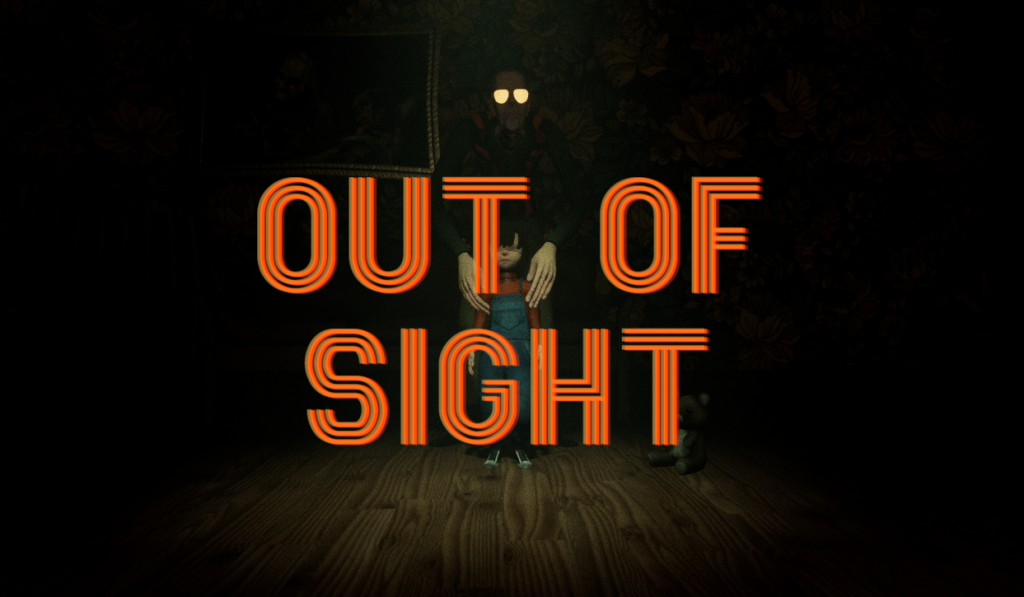
ABOUT THE PROJECT
Out of Sight is a unique second person puzzle/stealth thriller developed in six weeks at Futuregames.
We had the requirements to make a game inspired by the quote: ”We love the things we love for what they are”.
• Role: Product Owner, Game & UX Designer, Visual Scripting
• Project length: 6 weeks
• Engine: Unreal Engine 4
• Genre: Puzzle/Stealth Thriller
• Team size: 8 people
(4 designers and 4 artists)
AWARDS AND NOMINATIONS
Out of Sight was nominated for five categories at the Swedish Game Awards 2022: Game of the Year, Best Design, Best Art, Best Tech, and Best Narrative. The game proceeded to win the awards for the following categories: Game of the Year, Gamer’s Choice Award, Best Design and Best Art.
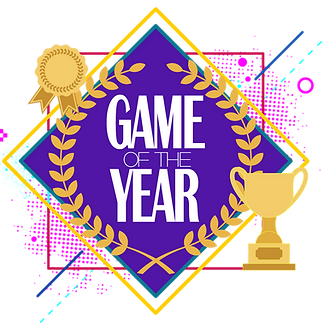
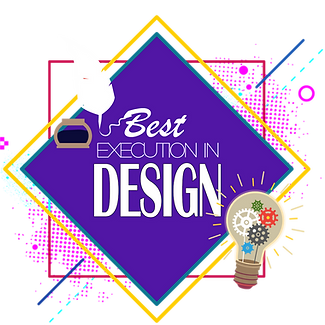


CONTRIBUTIONS
GAME & UX DESIGN
• Core gameplay loop
• Mechanics
• Progression and onboarding
PRODUCT OWNER
• Conveying the team vision and maintaining the GDD
• Managing Jira backlog
• Organizing playtests and feedback
VISUAL SCRIPTING
• AI behavior
• Level mechanics
• Player character (partly)
GAME DESIGN
THE 2ND PERSON PERSPECTIVE
Out of Sight is a second person perspective experience where you play as a young blinded girl that has been kidnapped. You can’t see with your own eyes, but you have your teddy bear with you that grants you vision. By picking up, carrying and placing the teddy bear at different locations you gain new perspectives around the house.
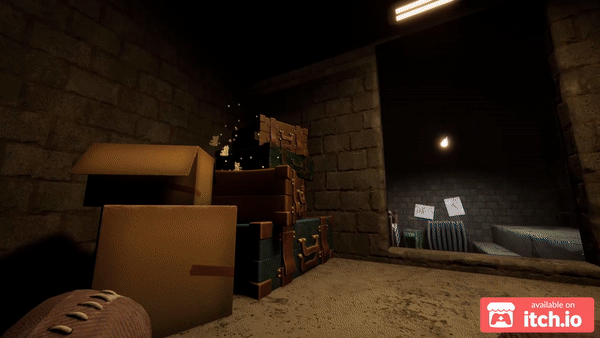
As the girl with her teddy you need to solve the puzzles that will allow you to escape your kidnapper’s house. This eerie stealth game challenges you with a remarkable new camera mechanic that lets you control your character independently from their own point of view. Throughout the game, you will discover interesting new ways which you can use the teddy’s eyes to your advantage, as you try to avoid the kidnapper while finding a way out.
Design Pillars
Intricate

Unsettling

Explorative
MECHANICS
PLAYER
We wanted the camera mechanic to be the main focus of the gameplay experience, and for that to happen we needed several means of utilizing the mechanic in new and interesting ways. Since the mechanic was unfamiliar to most of our playtesters we realized that any other mechanics in the game needed to be quite simple, in order to not overwhelm the players with unfamiliarity as they tried to solve the puzzles.
Place Teddy Bear
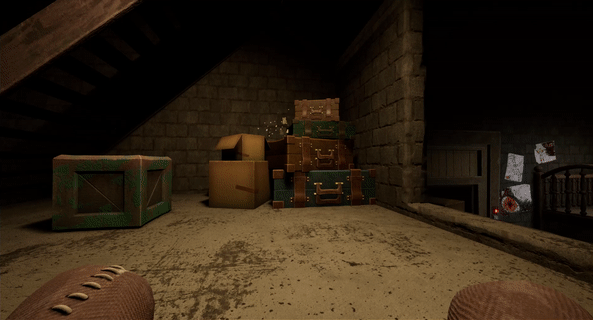
The primary mechanic allows the player to place their teddy bear at set locations (teddy points). Placing down the camera lets the player swap to moving the character independently from the camera.
Move Boxes
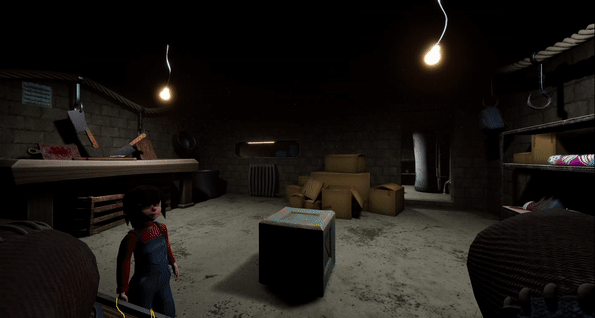
By moving boxes around the player can modify their surrounding, to reach new locations and heights. We use this mechanic as a way of providing a familiar obstable to the puzzle complexity.
Lift Up Teddy
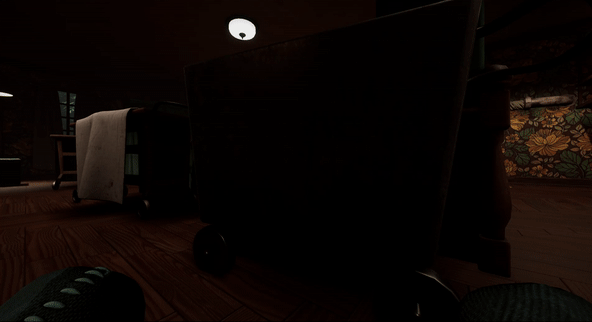
The character’s low point-of-view is nicely paired with this lift-up mechanic that allows the player to see above furniture. It provides a safe way to inspect the environment while maintaning intricacy.
KIDNAPPER
Our AI (the kidnapper) was designed to be an ever present threat that would lurk around the house. We also wanted it to be an integral part to solving the mystery of how to escape the house. Therefore, we make sure the player needs to interact with, or manipulate, the kidnapper at key points during the game’s progression.
Chase Player
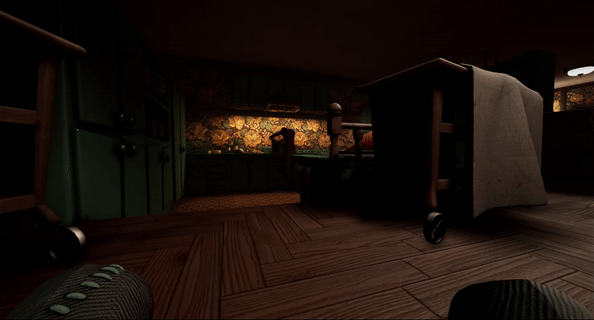
If the kidnapper sees the player’s character they will stop what they were doing and hunt you down. Once you are spotted, you will be caught. This requires the player to learn the AI’s behavior if they are to overcome its presence.
React to Event
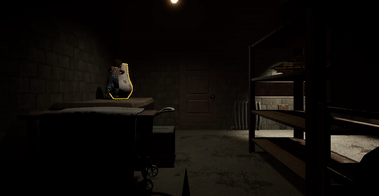
The player can trigger events that the kidnapper reacts to. Through this mechanic, the player can make the AI perform tasks for the them. However, triggering an event always comes with a risk of being caught.
Rotate/Cooking
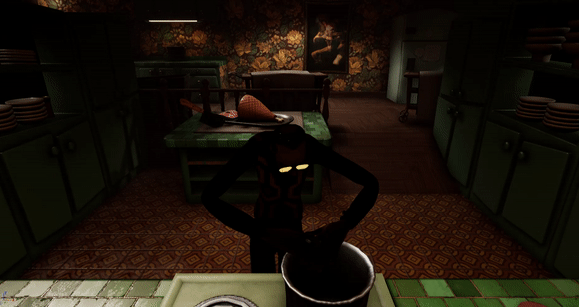
The kidnapper’s default state is to be cooking in the kitchen, rotating from one point of view to another. The player needs to avoid being seen by the AI’s sight if they are to sneak over to the other side of the room.
PUZZLES
At first, we wanted the puzzles to be brain teasers, as in many traditional escape rooms. Creating puzzles that required a large cognitive load was however not in line with the vision of highlighting the main camera mechanic’s uniqueness. Solving difficult puzzles is even more challenging when there is a dangerous presence around in the form of the kidnapper. We therefore decided the keep our puzzles exploration based in order to let the teddy bear mechanic shine.
Pick Up Items
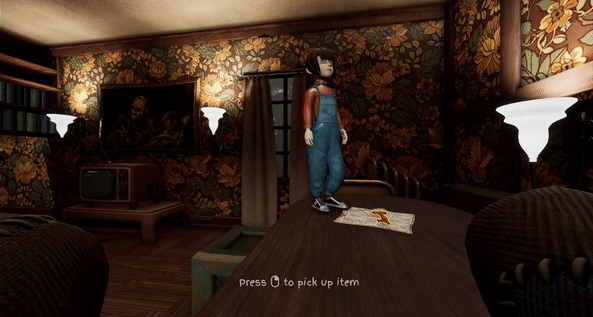
The majority of the puzzles have a key and lock set-up. Locating the keys is one thing, but finding a way to reach them can be a lot more difficult.
Interact
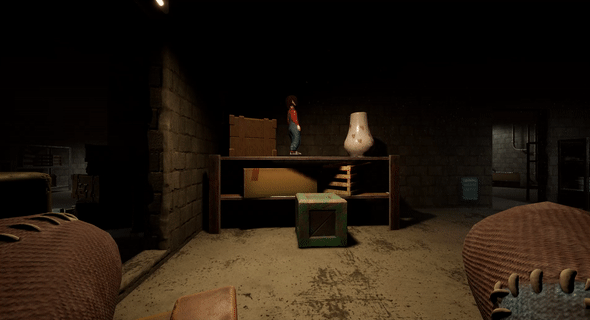
To reach the key items the player needs to interact with objects around the house. Moving boxes to jump on, smashing vases etc.
Distract Kidnapper
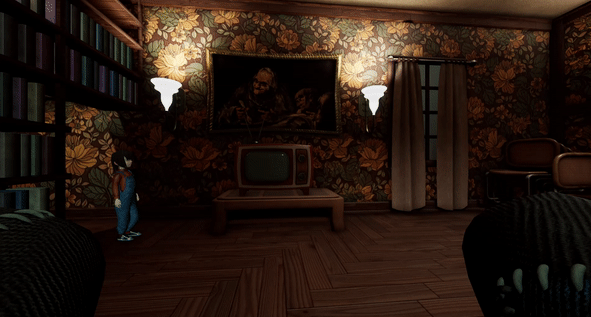
The final puzzle mechanic involves the kidnapper. The player can cause the AI to move to certain locations at certain times, opening doors for the player.
Camera Iterations
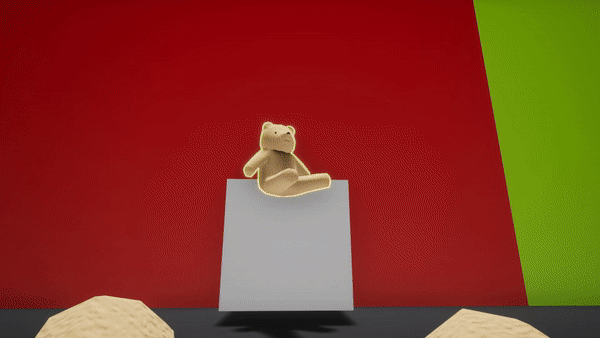
mechanic required many iterations.
PROGRESSION
HOW TO AVOID THE GIMMICK
It was very important for us that placing and picking up the teddy bear did not become a tedious task for the player to perform. Instead, we wanted it to benefit the player by providing them with new advantageous perspectives. Therefore, we needed to invent new ways to use the mechanic in order for it not to feel repetitive. In addition to picking up/placing the teddy and the lift-up mechanic we introduce two other events where the camera viewpoint is the center of attraction.
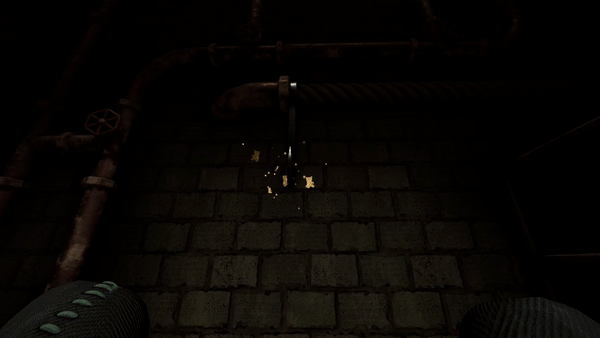
Independent Camera Movement
The first camera event requires the player to place the teddy on a hook, that then moves along a rope. This changes the way the player have learned to use the camera mechanic, by providing an overview while the camera is moving. It lets the player progress in the level while not needing to return to the teddy point where they left their teddy bear. This lets both the camera and the player move independently.
Chased By Your Own Eyes
In the other event the kidnapper takes the teddy bear and holds it for themselves. It then chases the player down the hall while holding the teddy in front of them. This becomes a true second person perspective experience, where the player is running away from their own eyes. It lets the player see their surrounding, themselves, and the distance between themselves and the impending danger.
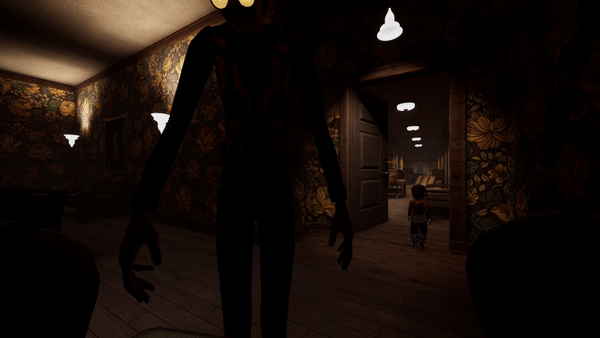
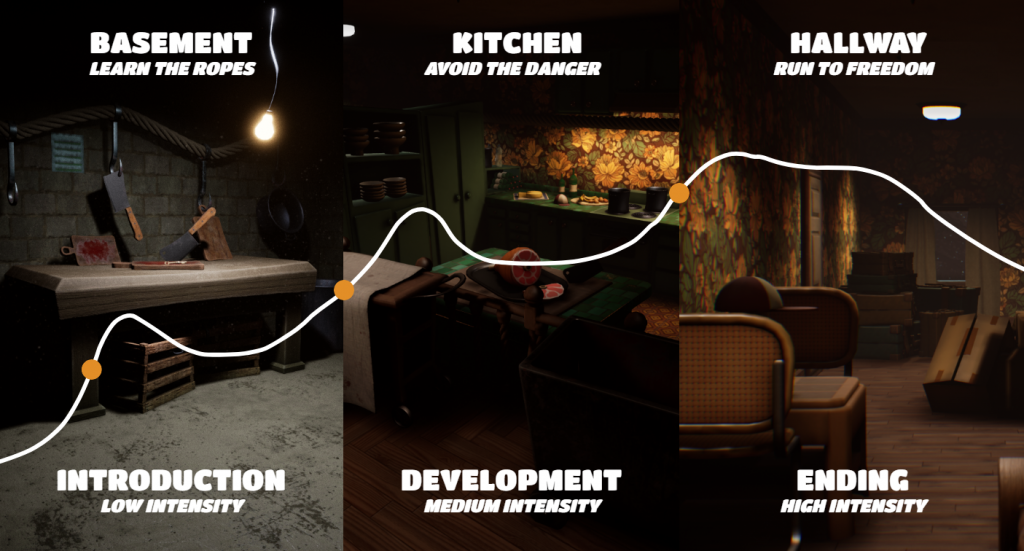
The basement focuses on teaching the player all the mechanics in a ”safe” environment. We introduce the kidnapper’s presence, but the player is never threatened by it.
The kitchen is the main level, where the player needs to use all the mechanics they have learned, while avoiding the added threat of the kidnapper that is lurking around.
The hallway is where the player makes their final run for freedom. Here, the kidnapper chases you in an intense sequence that creates a lasting impression that breaks the otherwise stealthy gameplay.
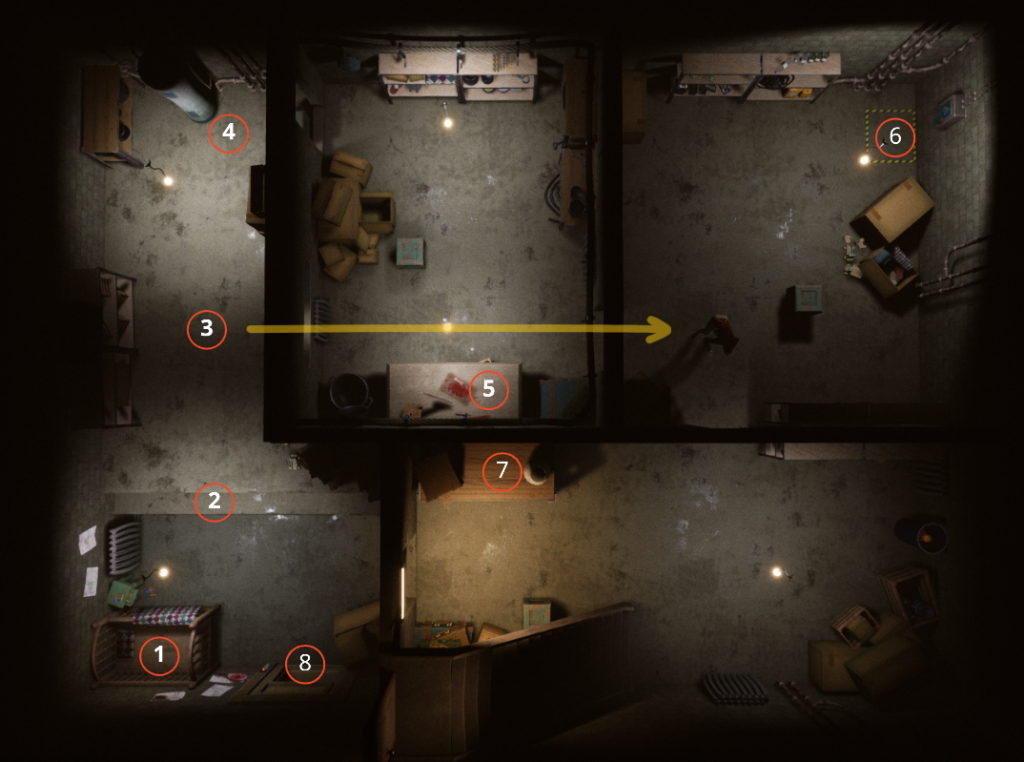
Part 1 – The Basement
1. Starts in crib, introduce camera mechanic.
2. Jump up the ledges.
3. Lift up teddy, can see kidnapper lurking.
4. Move first box.
5. Find the key.
6. Open the lock to the fuse box.
7. Find the missing fuse for the fuse box.
8. Ride the food elevator.
Part 2 – The Kitchen
9. Exits food elevator.
10. Activate hook line (moving camera introduced).
11. Break the vase, causes the kidnapper to open the door.
12. Activate second hook line.
13. Avoid being seen while moving the box to the other side.
14. Reach the first key.
15. Distract the kidnapper with the TV.
16. Reach the second key.
17. Unlock the hallway door.
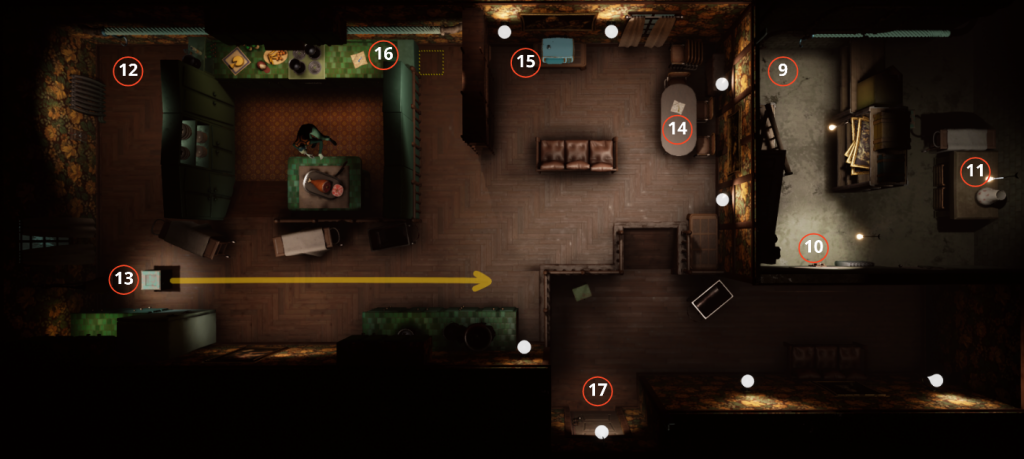

Part 3 – The Hallway
18. Enters the hallway, chased by the kidnapper.
19. Run to the window and make your escape.
UX DESIGN
We knew from the start of this project that the look, sound and feel of both the characters and the environment would be essential to the user’s experience. It was those elements that would bring forth the creepy and unsettling elements of the game. I wanted to ensure that we worked towards a coherent game world, so I was communicating regularly will all members of the team to make sure we stayed true to that vision. We knew we had succeeded when some playtesters were literally shaking in their chairs.
Game Feel
In order for us to allow the player to become immersed by the unsettling environment, the gameplay mechanics needed to be very smooth and easy to use. This included removing all unnecessary steps in the process of performing tasks, so everything can be executed with just one click. It also meant seamlessly changing the player’s movement and rotation to always face the camera’s forward direction.
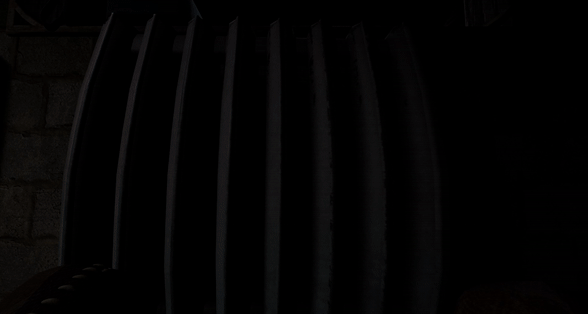
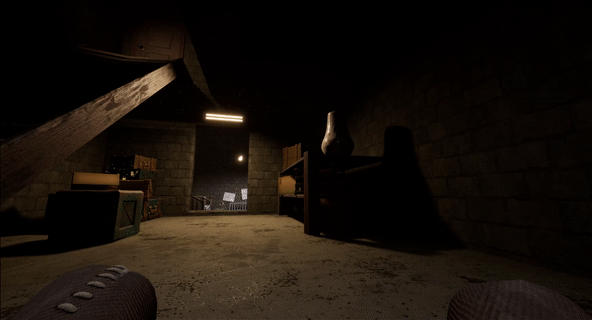
Player Guidance
We noticed during playtesting that a great amount of handholding was required to solve some puzzles. Instead of stating the objectives outright we give hints towards the solutions. As the player approaches key objects a UI pop-up will appear saying: ”That vase looks fragile..” or ”The elevator seems to be turned off..”. These interactables are highlighted when the player is close to them. With this intricate system we wanted the players to feel like they came up with the solutions themselves since we only hint at what to do, not how to do it.
Onboarding
Since the camera mechanic was unfamiliar to many playtesters we put a lot of focus on the onboarding of the mechanic. We decided to gate the player by only being able to take the next step once they had completed their current one. By taking one thing at a time we were able to ensure that the player felt comfortable with picking up and placing the teddy bear before they progressed into the kitchen level where they would need to use the mechanic while also being under threat from the kidnapper.
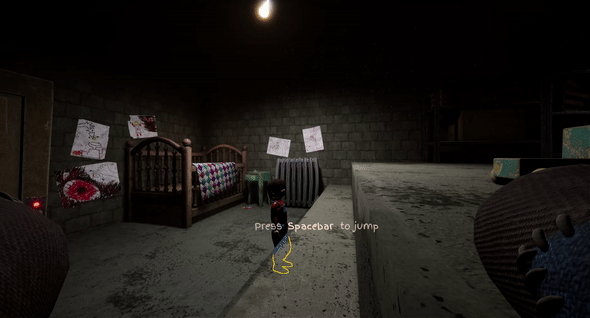
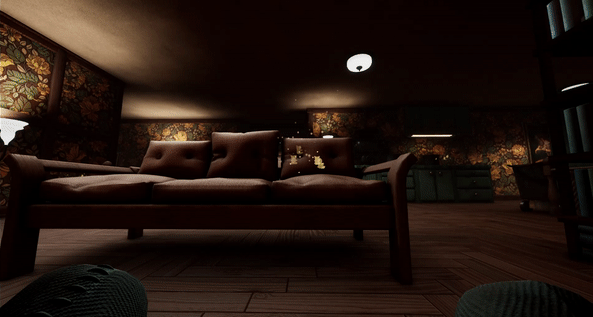
Teddy Points
We experimented with allowing the player to place the teddy anywhere but it was too difficult to control as the player’s didn’t know where to go or what to do. It became clear during playtesting that we needed set teddy points that give overview and also face towards the objectives. A core part of the user experience is exploring the rooms to find where you can place your teddy bear. Such an important gameplay element needed to be easily recognizable with a clear VFX at range, and for extra clarity we also added a highlighted teddy silhouette when the player gets close to it.
NARRATIVE
Environmental Storytelling
The environment tells the story of other children being in the house before you, with backpacks, drawings, clothes and toys scattered across the basement. It also tells the story that the kidnapper is butchering something in his basement, which is confirmed in the kitchen where there is more equipment such as meat grinders. Several hints to the events occurring in the house exist, from the grocery list on the fridge to other children hiding around the house.

PRODUCT OWNER
Game Vision – The Workflow
As the product owner of this game I contributed greatly to the core idea, which was then expanded upon by the whole team in several brainstorm sessions, that were eventually decided upon by majority vote. I was then tasked with spearheading the designer squad as we ironed out the mechanics, levels and overall progression of the game. Out of Sight was a collective effort that was mapped out using Miro.
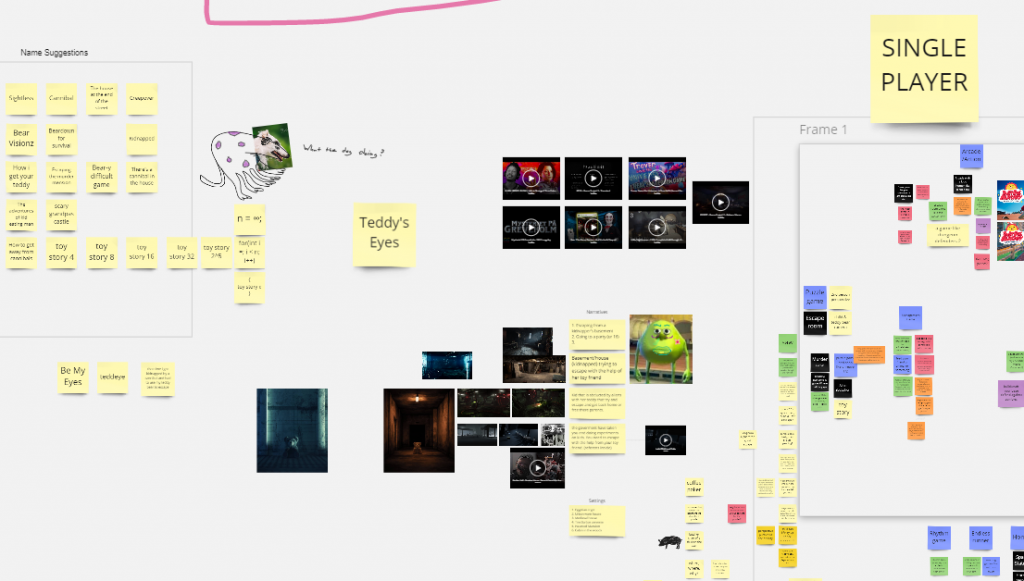
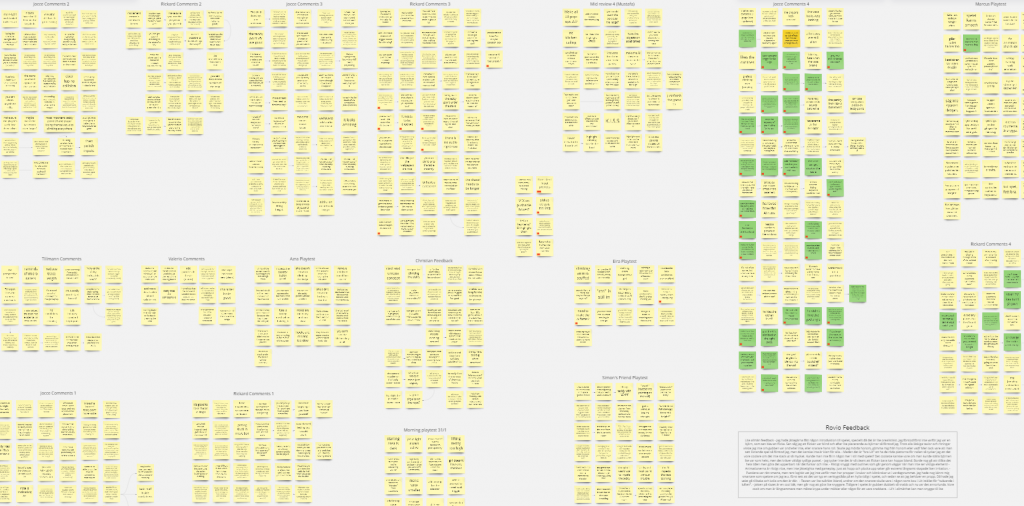
Playtesting – Early and Often
Since we decided not to play it safe and explore an unknown mechanic (the 2nd person perspective) it meant we needed to playtest the game a lot. I was tasked with organizing many of the playtests and gathered feedback from every single one. This large collection of notes resulted from friends, mentors and industry professionals playtesting all stages of our game. I then analyzed the feedback and evaluated what was beneficial and what was excessive.
Organization – Scrum and Jira
Communication and organization were fundamental in this project. I wrote and updated the GDD, and held morning and end-of-day meetings every day to make sure everyone knew what had been done and what needed to be done going forwards. I participated in scrum and documented the meetings with a protocol so everyone could stay up to date. It was also my responsibility to keep track of the Jira backlog, where I added bug tickets from my daily personal playtest.
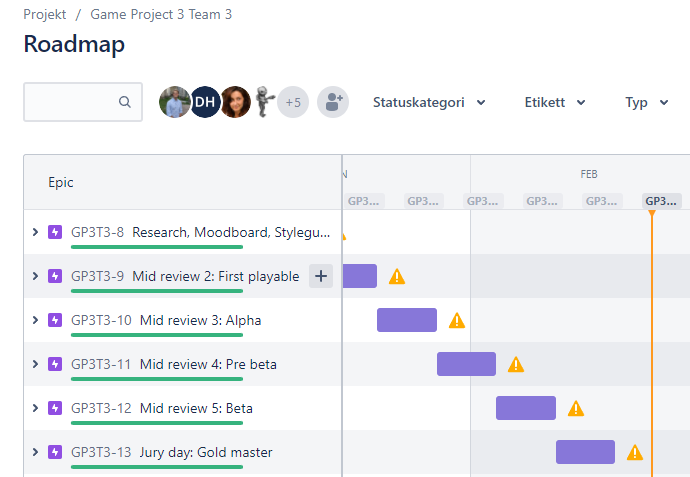
VISUAL SCRIPTING
Since we were several designers tasked with doing visual scripting I made sure to keep my blueprints well commented and structured so that they were easily readable for the others. Naming convention, folder structure, and logic was a big part of my scripting focus, since many chefs were stirring in the same pot. The scripting where I contributed most was the AI behavior, many level mechanics, parts of the player character, and the menus.
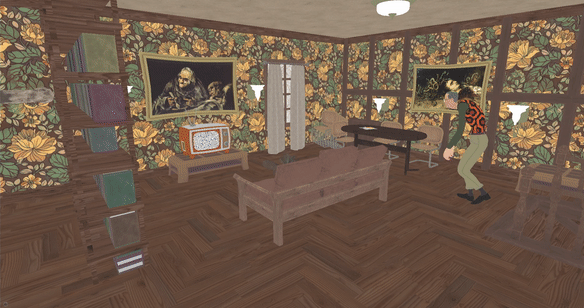
AI Behavior
I had primary responsibility for the AI scripting, and did most everything on it. Including the AI actor itself, the AI controller, the animation blueprint, the behavior tree and blackboard as well as the behavior tree tasks and world location actors or triggers. I did the AI more complex than was needed for the game, and needed to remove some features that made the AI lose the player while it was chasing them, caused by the kidnapper hurting his back from running for too long.
Level Mechanics
Some of the level mechanics I scripted include the hook mechanic with the hooks themselves, their trigger and the rope they slide along. I also integrated the moving boxes and vase so that they could operate in tandem with our player character without breaking the movement system. Finally, I scripted the TV and the reaction events that causes the AI to investigate it.
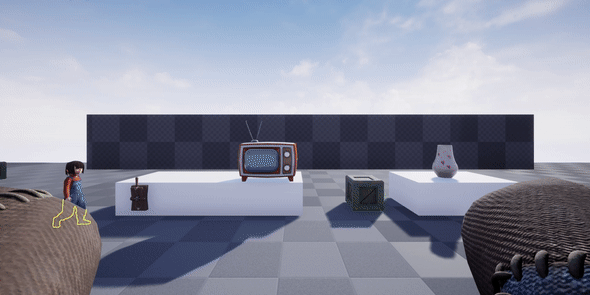
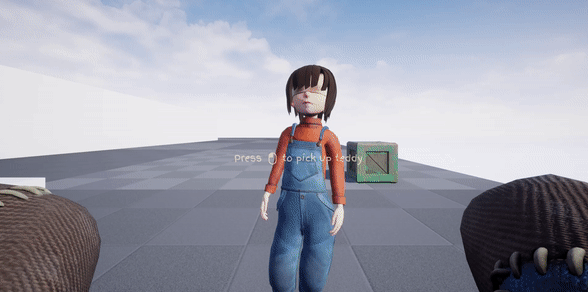
Player Character (partly)
I was not the main scripter for the player character, but I created some of the core features of the game. These include picking up and placing the teddy bear, and the teddy points (placement locations). I also scripted the jumping ability as well as tweaking many variables to make sure the gameplay experience was smooth and had a nice flow.
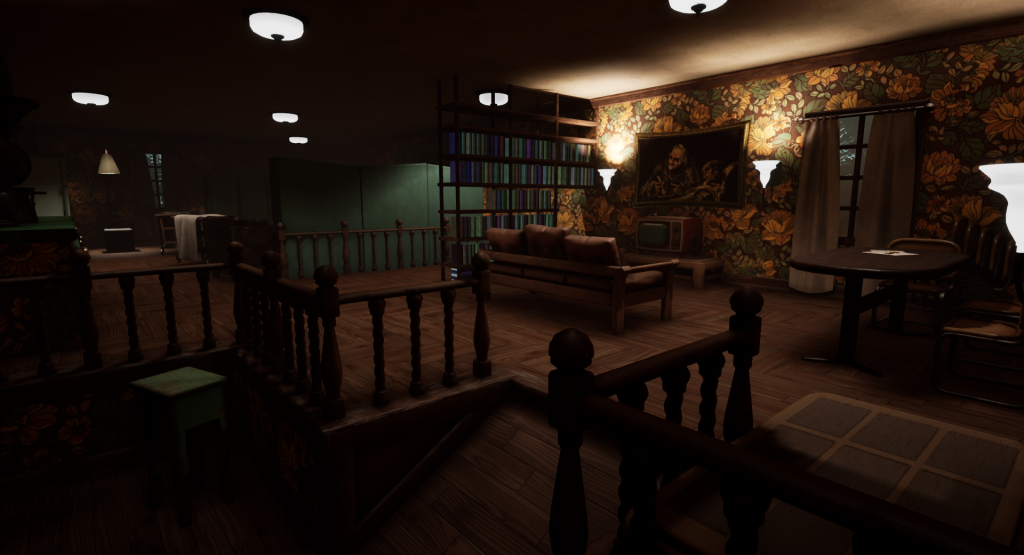
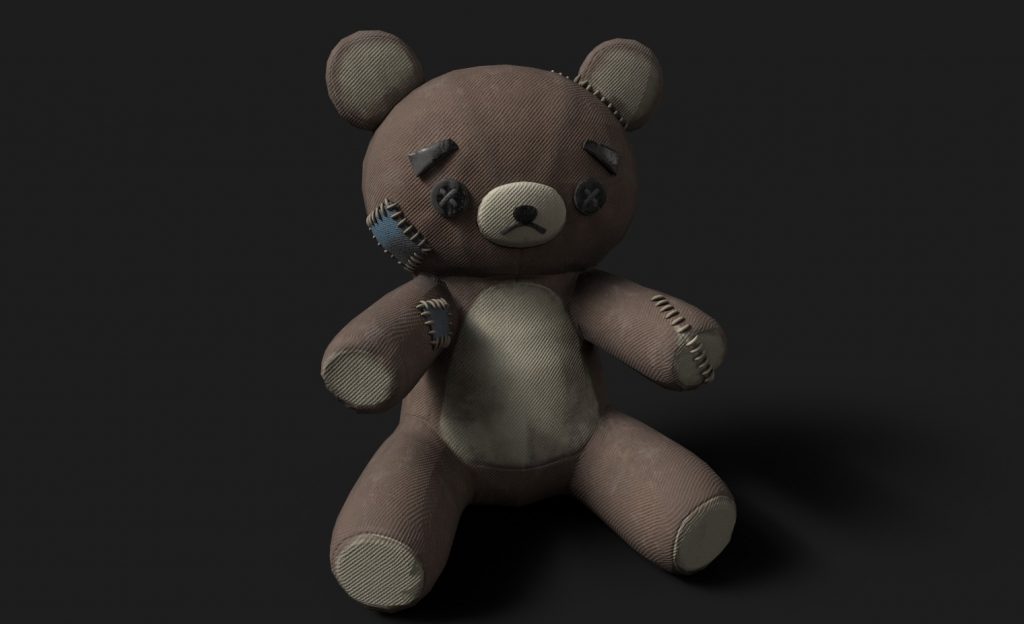
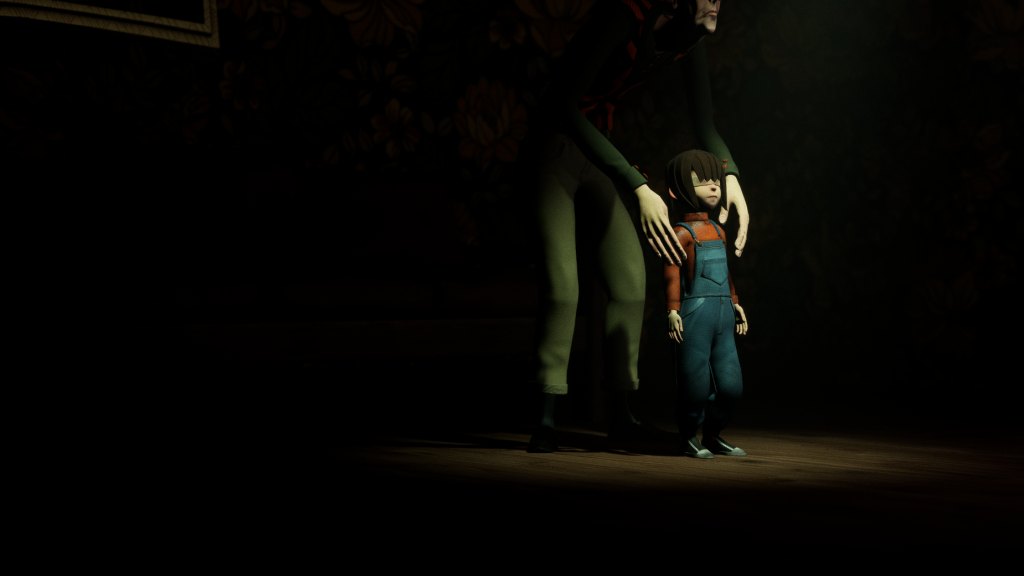
PLAYER RESPONSE
When releasing the game on itch.io we were pleasantly surprised with the reception of our game. The game really took off by itself without us needing to do any marketing at all!
It didn’t take long for the game to be featured as a top game on itch.io and the players who downloaded our game often came back with great comments on our page.
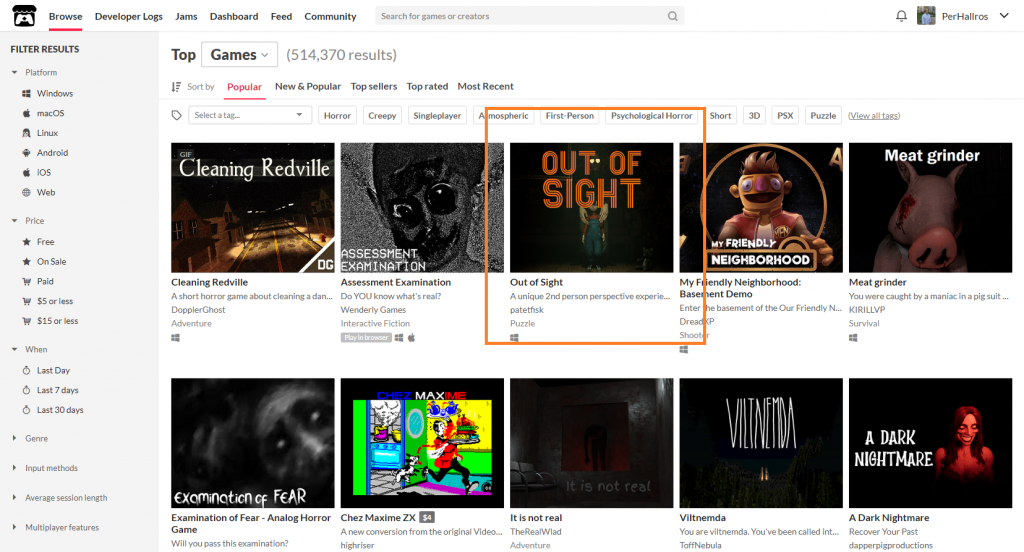
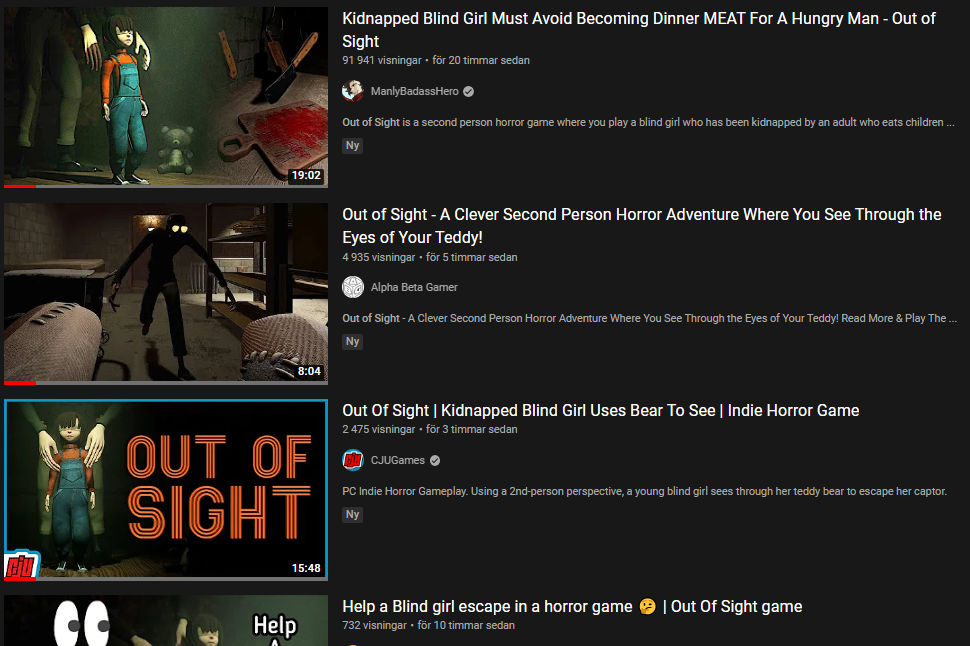
There were many YouTube creators that made ”Let’s Play” videos of the game, and already on the first day the videos generated over 100 000 views. After a week the game had been downloaded more than 2500 times and had over 1 000 000 total views on YouTube. The game was also reviewed and recommended in Taiwanese, Korean and English articles which further increased the game’s exposure.
”[…] the visual design is excellent and the core second person perspective mechanics are used in some very creative ways. It’s got some great ideas and it would be great to see it expanded on in the future.” – Free Game Planet (2022-03-09).
Here’s a selection of YouTube comments from the many playthrough videos that have been created. There are many wonderful comments to choose from and I’m so happy that players are enjoying the game all over the world!




CLOSING THOUGHTS
What a project this was. I am so incredibly proud of what I and the team were able to accomplish due to a simple and very important cause. Everything we did in the game we did for a reason, from the placements of every single teddy point to the AI’s field of view or even the player’s height in relation to the furniture. I am happy that we took a risk and created a game around a mechanic that we hadn’t seen before. Finding entertaining ways to use it was my greatest design challenge yet, but the feedback we received from players made it so worth it.
TEAM MEMBERS
GAME DESIGNERS
• Per Hallros
• Damien Hallström
• Mattias Nordebäck
• Sigge Lindberg
3D ARTISTS
• Simon Norrmén
• Clara Cox
• Eric Östlund
• Andrea Rossino
Thank you for exploring Out of Sight, I hope you found it interesting!
